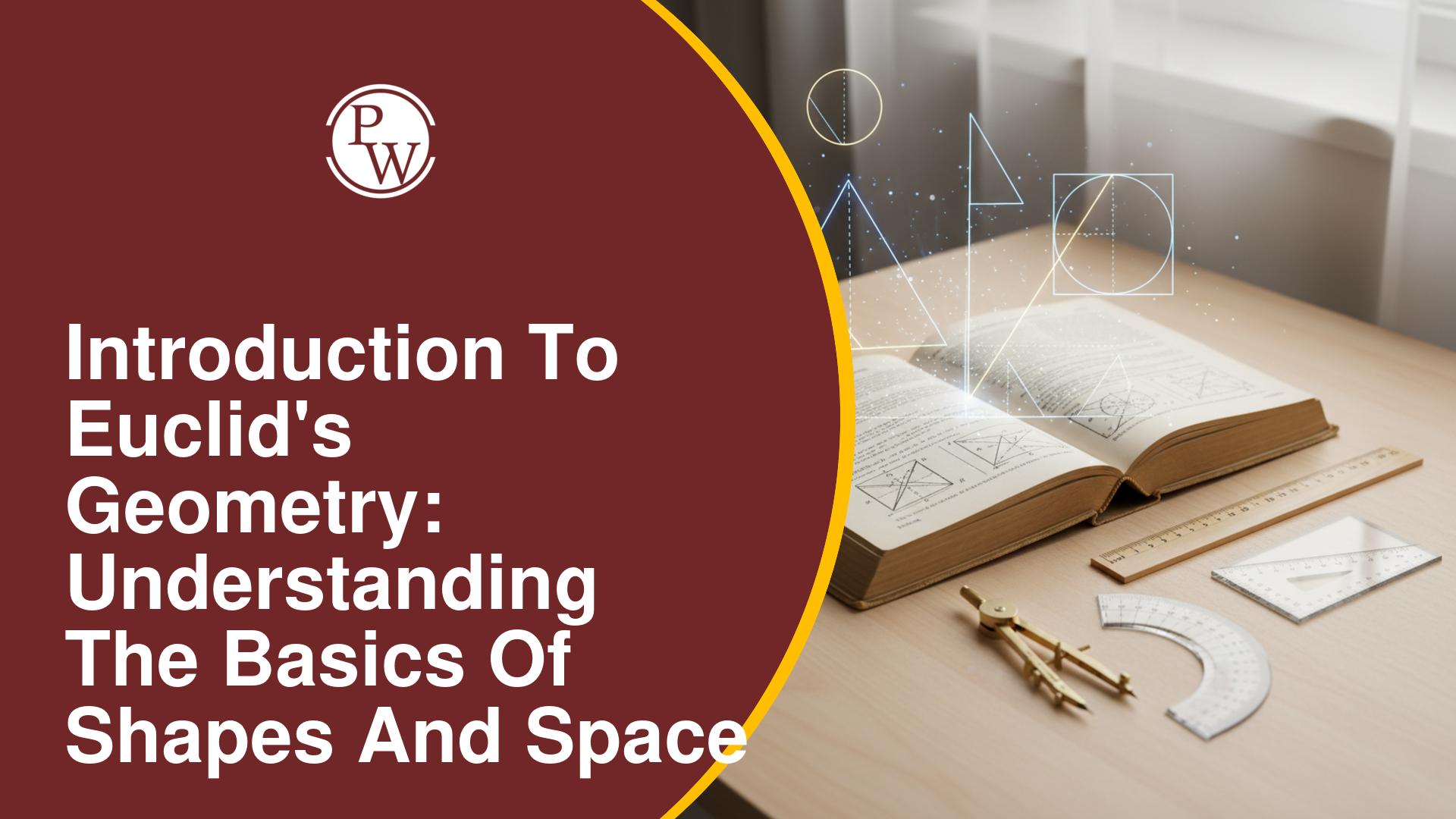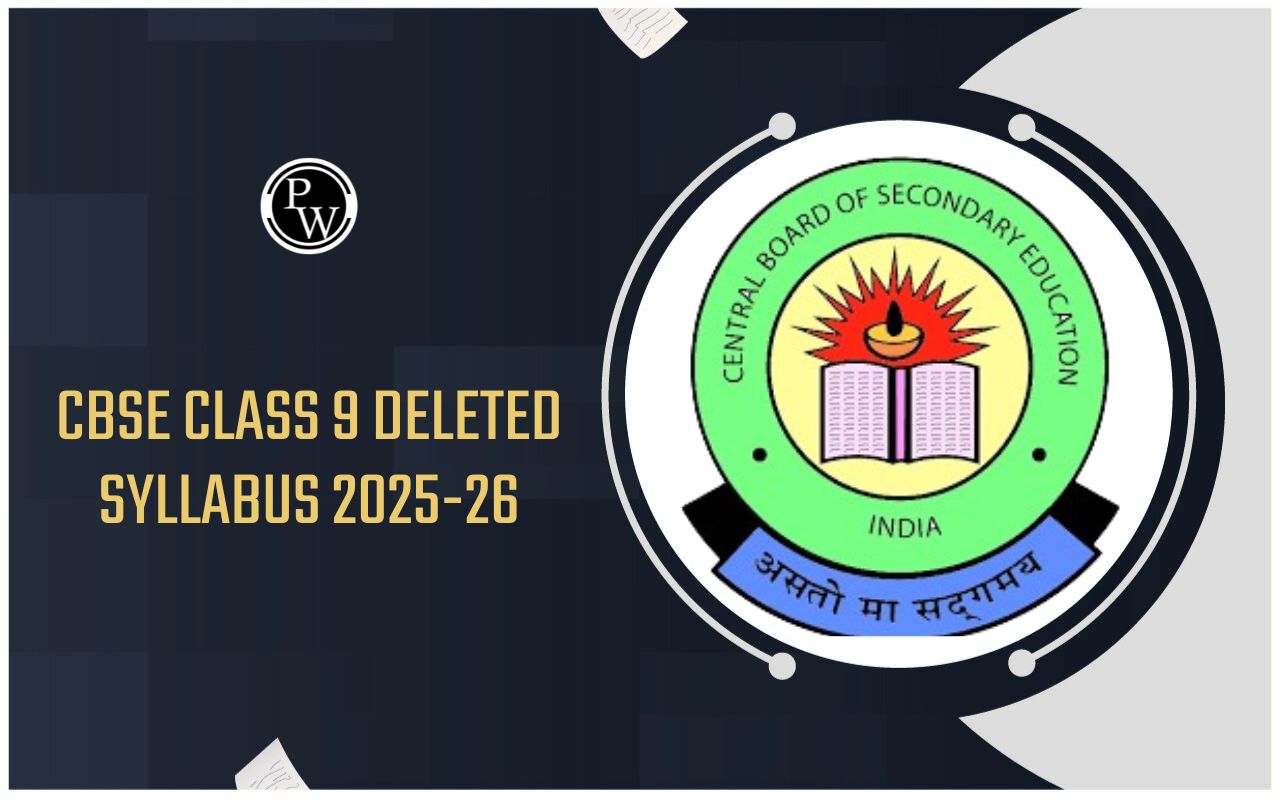
Geometry Formulas: Geometry is an interesting branch of mathematics that facilitates our understanding of the size and shape of things surrounding us. It helps us understand properties and relationships of points, lines, surfaces, solids, and higher-dimensional analogs. To calculate the space they occupy or the edges they have, we use geometry formulas. They consist of formulas of 2D shapes, 3D solids, and coordinate geometry formulas.
From finding the area of a piece of land to solving problems in Class 9, Class 10, and even competitive exams such as JEE or NEET, having the correct geometry formulas in mind can save time and increase scores.
Basic Geometry Formulas
Basic Geometry Formulas are elementary mathematical formulas that enable us to find properties such as area, perimeter, and volume for 2D figures such as squares, rectangles, and triangles, and 3D solids such as cubes, cylinders, and spheres. There are special formulas for each shape to measure its dimensions precisely. Learning the basic geometry formula provides a solid foundation for advanced math and problem-solving abilities.
2D Geometry Formulas
2D geometry formulas assist us in determining flat shapes that have only length and breadth, such as squares, rectangles, triangles, and circles. These formulas help us to determine the perimeter and area of objects. Below is the geometry formula chart of 2D figures for the reference of candidates.
| 2D Geometry Formulas | ||
| Shape | Area Formula | Perimeter Formula |
| Square | a2a^2a2 | 4(Side) |
| Rectangle | Length × Breadth | 2(Length + Breadth) |
| Triangle | ½ × base × height | a+b+ca+b+ca+b+c |
| Circle | C=2πr | A=πr2 |
| Parallelogram | b×hb \times hb×h | 2(a+b)2(a+b)2(a+b) |
| Rhombus | 12d1d2\tfrac{1}{2} d_1 d_221d1d2 | 4(Side) |
| Trapezium | ½ × (base1 + base2) × height | Sum of all sides |
3D Geometry Formulas
3D geometry formulas determine different properties of three-dimensional solid objects, e.g., length, width, and height. The formulas are applied to obtain the surface area, curved surface area, and volume of solid shapes like cubes, cylinders, cones, and spheres.
Read: Three Dimensional Geometry Formula
The following is the geometry formula chart for three-dimensional figures.
| 3D Geometry Formulas | ||
| Shape | Perimeter (P) | Area (A) |
| Square (side a) | P=4×a | A=a×a (or a2) |
| Rectangle (length l, width w) | P=2×(l+w) | A=l×w |
| Triangle (base b, height h) | P=sum of all 3 sides | A=21×b×h |
| Circle (radius r) | C=2πr (Called Circumference) | A=πr2 |
Coordinate Geometry Formulas
Occasionally, we place shapes on a grid named the coordinate plane, using x and y values to locate exact points. That is where coordinate geometry formulas are helpful.
1. The Distance Rule: This rule is used to find the straight distance (D) between two points on the grid, such as walking in a straight line from your house to a friend's house.
If you know point A (x1,y1) and point B (x2,y2):
- D=√((x2−x1)2+(y2−y1)2)
2. The Midpoint Rule: This rule gives the middle point of a line segment exactly.
- Midpoint x=(x1+x2)/2
- Midpoint y=(y1+y2)/2'
Read: Coordinate Geometry Formula
Geometry Formulas Chart for Quick Reference
A Geometry Formulas Chart for quick reference is provided below for 2D and 3D shapes. This chart acts as a handy tool for students and professionals alike to quickly recall and apply formulas during studies, exams, and practical problem-solving.
|
Geometry Formulas Chart |
||
|
Shape |
Key Formulas |
Shapes |
|
Square |
Area = a2a^2a2, Perimeter = 4a4a4a |
2D |
|
Rectangle |
Area = l×bl \times bl×b, Perimeter = 2(l+b)2(l + b)2(l+b) |
2D |
|
Triangle |
Area = 12×b×h\frac{1}{2} \times b \times h21×b×h |
2D |
|
Circle |
Area = πr2\pi r^2πr2, Circumference = 2πr2\pi r2πr |
2D |
|
Cube |
Surface Area = 6a26a^26a2, Volume = a3a^3a3 |
3D |
|
Cuboid |
SA = 2(lb+bh+hl)2(lb + bh + hl)2(lb+bh+hl), Volume = l×b×hl \times b \times hl×b×h |
3D |
|
Sphere |
SA = 4πr24\pi r^24πr2, Volume = 43πr3\frac{4}{3} \pi r^334πr3 |
3D |
Some Solved Examples Using Geometry Formulas
The following are some solved examples illustrating the application of basic geometry formulas. These examples help in understanding concepts with ease.
Example 1: A rectangular park has a length (l) of 20 meters and a width (w) of 12 meters. Calculate the area of the park and the total length of the fence (perimeter) required to enclose it.
Formulas Used:
- Area of a Rectangle (A) =l×w
- Perimeter of a Rectangle (P) =2(l+w)
Solution:
-
Calculate the Area:
A=20 m×12 m
A=240 square meters (m2) -
Calculate the Perimeter:
P=2(20 m+12 m)
P=2(32 m)
P=64 meters (m)
Answer: The area of the park is 240 m2, and the total length of the fence (perimeter) required is 64 m.
Example 2: A spherical water tank has a radius (r) of 3 meters. Calculate the maximum volume of water the tank can hold (use π≈3.14).
Formula Used:
- Volume of a Sphere (V) =34πr3
Solution:
-
Substitute the radius into the formula:
V=34×3.14×(3 m)3 -
Calculate the cube of the radius:
(3 m)3=3×3×3=27 m3 -
Calculate the Volume:
V=34×3.14×27
V=4×3.14×327
V=4×3.14×9
V=113.04 cubic meters (m3)
Answer: The tank can hold a maximum of about 113.04 m3 of water.
List of All Geometry Formulas PDF Download
The list of all geometry formulas PDF can be downloaded by candidates from the link. It contains essential formulas required for area calculations, perimeter calculations, volume calculations, and surface area calculations of different 2D and 3D figures. Keeping these formulas in one place helps in easier study and revision.
Geometry Formulas FAQs
How to remember all geometry formulas easily?
What are the formulas of 2D shapes in geometry?
What are the formulas of 3D figures in geometry?
Where can I download all geometry formulas PDF?










